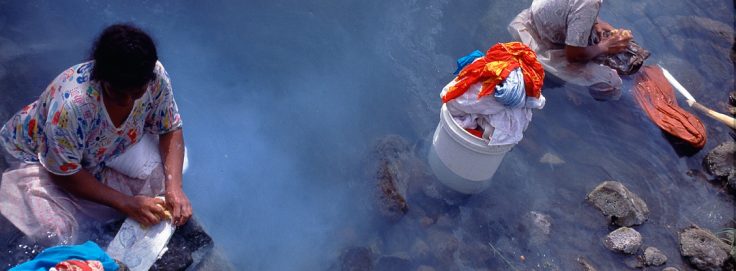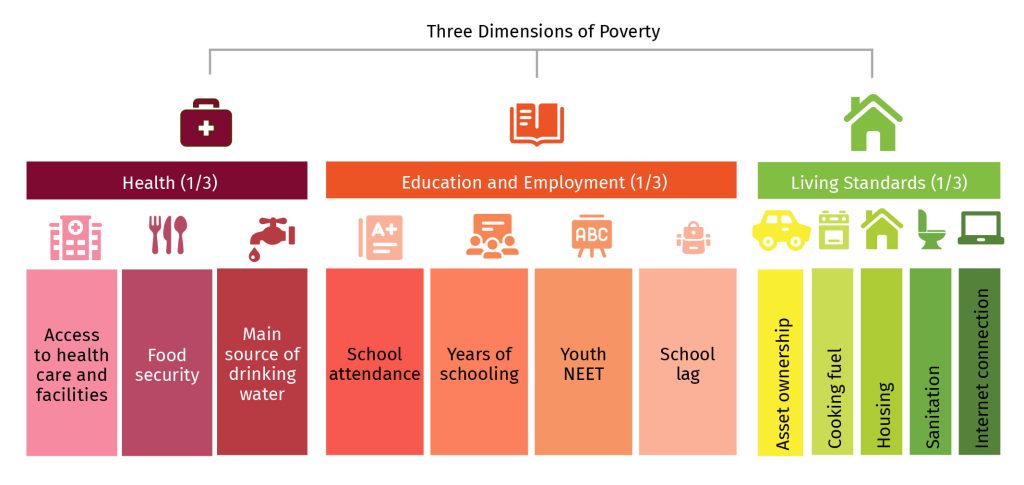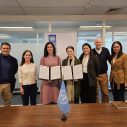
Search
Shifting Perspectives: Assessing Poverty Beyond Money in Samoa with the MPI

Samoa has been measuring monetary poverty since 2002, using the Household Income and Expenditure Surveys (HIES). However, from 2002 to 2018 the reduction in monetary poverty has been less than 1 percentage point, passing from 22.9% to 21.9% in 16 years.
Samoa’s attention should be directed to relative poverty rather than absolute poverty. This is largely due to the fact that in the Pacific, there is the existence of a large subsistence economy where people have access to land and sea resources. That said, to further understand the dynamics of poverty in Samoa, an initiative was implemented by the Samoa Bureau of Statistics to measure the non-monetary aspects of poverty. The MPI (Multidimensional Poverty Index) fulfilled this, as it allows poverty to be measured in non-monetary terms, because it includes indicators such as education, health, employment and living standards.
The process of designing and computing the national MPI for Samoa
The Samoa Bureau of Statistics with the technical assistance of OPHI designed and computed the national MPI for Samoa. The MPI aligns with existing national policies and frameworks in Samoa.
For example, the Pathway for the Development of Samoa (PDS) FY2021/2022 to FY2025/2026 was used as the basis for selecting the dimensions and indicators.
Three dimensions were aligned with the PDS FY 2021/2022 – FY 2025/2026, with the dimension of health covering indicators of access to health care facilities, food security and main source of drinking water; the dimension of education covering indicators of school attendance, years of schooling, youth NEET and school lag; and, the dimension of living standards covering indicators such as asset ownership, cooking fuel, housing, sanitation, and internet connection.
A working group was established comprising of five government ministries (Finance, Education, Women, Community and Social Development and Health) and a steering committee was also set up comprising of the members of the Statistics Advisory Board and the respective CEOs from these relevant ministries. The indicators and dimensions were discussed among the working group and then presented and proposed to the steering committee.
The dimensions and indicators were derived from the Household Income and Expenditures Survey implemented by the Bureau as this survey captures most of the economic and social issues that define poverty in Samoa. Deprivation cutoffs were also set for all the indicators to capture different poverty situations.
At the beginning, the notion of a non-monetary measure of poverty encountered some difficulties. The process of implementing the MPI was challenging as it was all about the adoption of this new concept originally discussed and proposed by UNDP. These challenges included what is an MPI? How is it computed? How should the data and results be analyzed and interpreted? How is it relevant in the context of Samoa? No one had any basic knowledge and understanding of MPI.
The results revealed that from the 12 indicators covered in Samoa’s MPI, the three indicators that contribute the most to the MPI are food security, source of drinking water and internet connection.
Additionally, the Bureau also had limited knowledge on the software used to compute the MPI. To overcome these challenges, from the beginning of the process virtual trainings and technical assistance were provided by OPHI. Further guidance was also provided via zoom sessions on the interpretation of the findings, resulting in the launching of the first MPI report for Samoa in February 2023.
What we learnt and what is ahead?
According to the results of this MPI report, a quarter (24.9%) of the population in Samoa are multidimensionally poor. Most of the poor are located in rural areas. The results revealed that from the 12 indicators covered in Samoa’s MPI, the three indicators that contribute the most to the MPI are food security, source of drinking water and internet connection with 18.4%, 16.2% and 12.1% respectively. By dimension, living standards contributed the most to the MPI with 41.6%, followed by health with 37.9% and education with 20.5%.
Disaggregating the MPI by household characteristics reveals that the child dependent population (age 0–14 years) and the old age dependent population (age 65 years and above) have the highest MPIs with 0.138 and 0.115 respectively.
The results further reveal larger households have a higher incidence of multidimensional poverty. Furthermore, the higher the education level completed by the head of the household, the lower the incidence of multidimensional poverty.
In terms of the sex of the household head, the results indicated that female – headed households are less likely to being multidimensionally poor when compared with households whose head is male, but the difference is marginal, with only 0.009 index points.
This first MPI report for Samoa provides information at the national and regional levels. This initiative has also enabled Samoa to measure SDG 1.2.2 (proportion of men, women and children of all ages living in poverty in all its dimensions according to national definitions).
It is envisaged that future work on Samoa’s MPI will be to disaggregate the results at the district level to ensure that it is aligned with the existing 51 political districts in Samoa. Since the MPI is constructed using the HIES survey, which is conducted every five years, it is further foreseen that Samoa’s MPI will be updated and monitored every five years.
Finally, it should be acknowledged that the Bureau has managed to produce disaggregated indicators and figures from this MPI initiative in measuring non-monetary poverty. The Bureau envisions that policymakers and planners will take a proactive inclusive approach to formulate and implement the necessary policies to ensure that no one is left behind.

This article was published in Dimensions 15
















